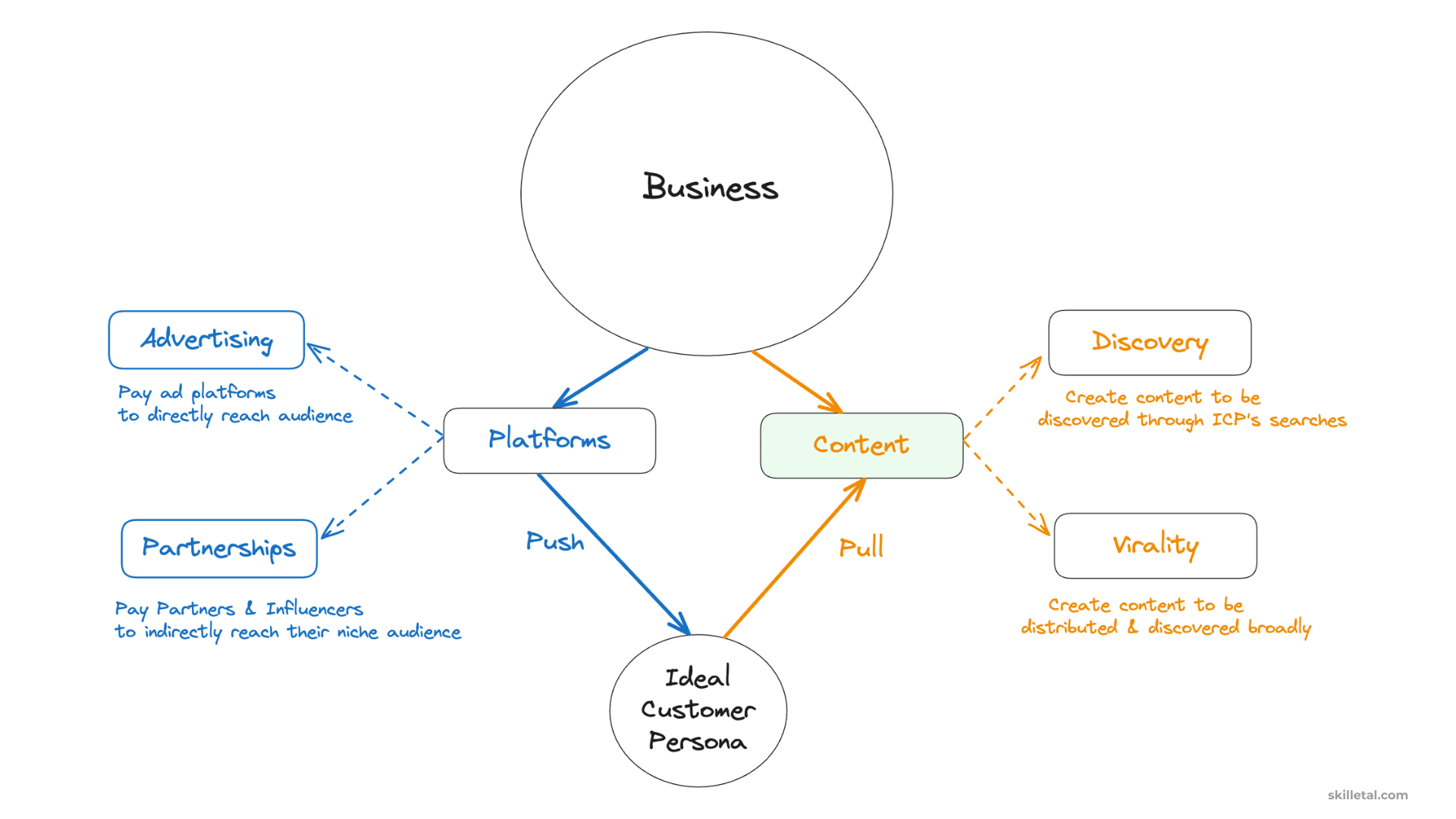What are Pull Channels?
Pull Channels play a pivotal role in user growth strategies. They encompass methods where potential users discover and come to your business on their own. Common examples include SEO, content marketing, social media engagement, and organic search.

Advantages of Pull Channels:
One of the main advantages of pull channels is their cost-effectiveness. Unlike paid advertising, the costs do not scale linearly with reach. This means that once the content or SEO strategy is in place, it can continue to attract users without significant additional investment.
Additionally, pull channels often build more authentic engagement and trust with users, as they are based on user discovery and interest.
Challenges with Pull Channels:
However, pull channels typically have a slower scaling speed compared to paid channels. They also offer less predictability and control, as success relies on user behavior and preferences, which can be volatile. This makes it challenging to generate quick, large-scale growth spurts.
Suitability for Businesses:
Pull channels are particularly effective for businesses that have a strong content foundation, are in niche markets, or have a longer customer decision-making process.
They may be less suitable as the primary growth channel for businesses requiring rapid, large-scale user acquisition in a short time frame, such as seasonal products or time-sensitive offers.
In summary, pull channels are a vital part of a user growth strategy, especially when aiming for sustainable, long-term user engagement. However, they should be balanced with other channels depending on the business needs and growth objectives.